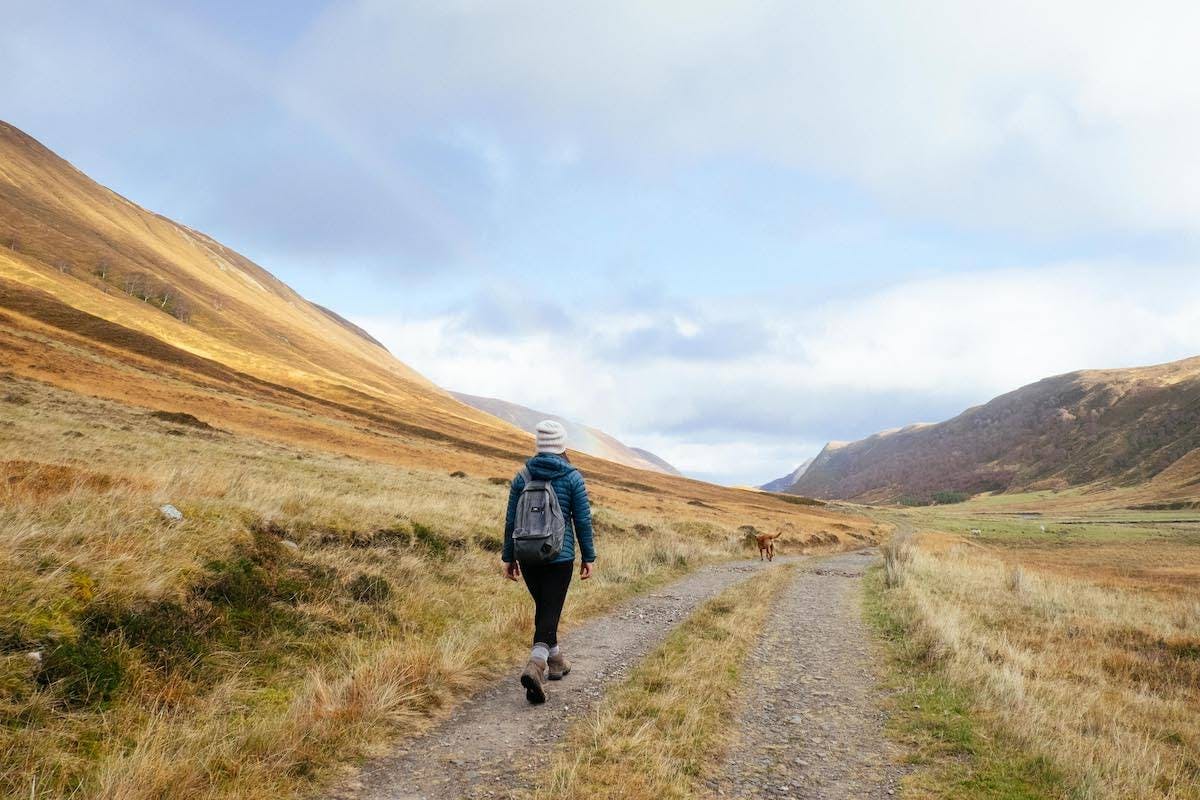Reforesting Scotland
Restoring the great Caledonian Forest
Scotland’s been voted the world’s most beautiful country in a number of polls. But look beyond its impressive mountain vistas and peat-coloured lochs and rivers and you’ll find degraded landscapes and fragile ecosystems.
Today, a wave of pioneering rewilding projects is sweeping across Scotland working to heal its ecological wounds. Already with some of the finest examples in Europe, Scotland is the perfect place to explore the wonderful world of rewilding.
Historically, much of Scotland was covered in forest. The Romans even gave it the name Caledonia, meaning 'wooded heights'. Swathes of Scots pine, birch, rowan, aspen and juniper covered the landscape and gave life to the vast Caledonian woodlands.
The Celtic rainforest on the west coast was home to spectacular oak and birch trees that grew from a rich green carpet of mosses, ferns and lichens. Lush meadows, thriving wetlands, peat bogs, and vibrant dunes and coastal habitats flourished.
Scotland's most iconic and rare wildlife, like the capercaillie and wildcat, were widespread and they lived alongside a diversity of species no longer found here. Lynx, wolves and wild boar once roamed this wild landscape. Since then, a combination of deforestation, overgrazing, persecution and climate change has transformed Scotland into a shadow of its former self. It has lost huge expanses of forest and many species have disappeared altogether. Today Scotland only has 4% native forest cover.
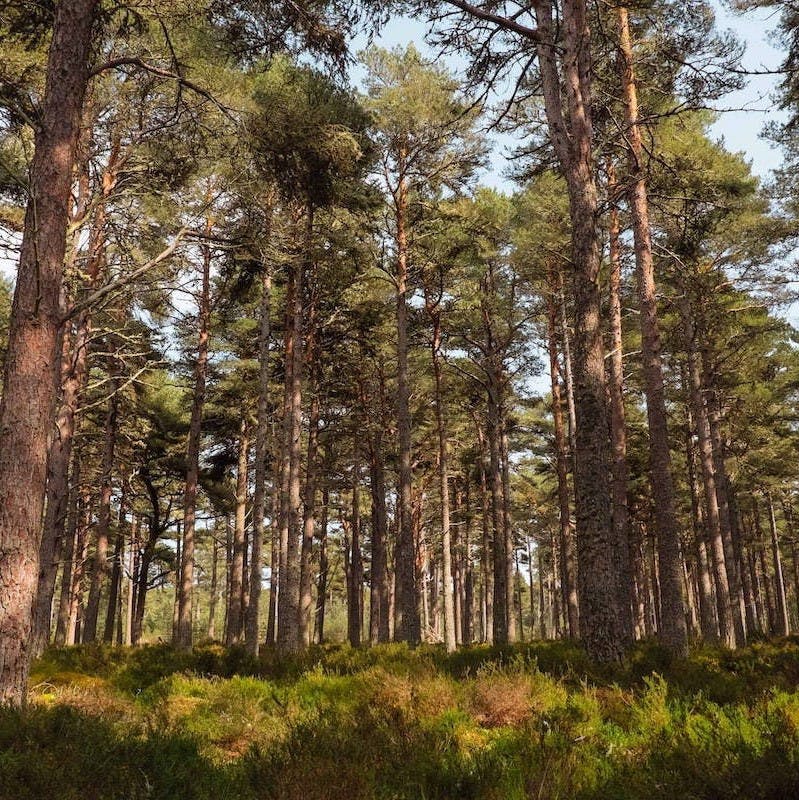
Over many centuries, felling for timber and farmland, combined with high densities of sheep, cattle and wild deer has had drastic ecological consequences for Scotland's woodlands.
In the 1700s, large scale sport shooting and sheep grazing began to leave its mark on the landscape. Overabundant herbivores and over grazing, alongside regular burning, prevented woodlands from naturally regenerating, causing soil erosion, soil acidification, flooding, biodiversity loss and more.
Sheep numbers have declined rapidly in Scotland in recent years, but red and roe deer numbers as well as numbers of non-native deer species, continue to increase. Deer are still a major ecological problem limiting the regeneration and expansion of woodland in almost all parts of Scotland. With all of their natural predators (lynx, wolves and brown bears) absent from the landscape, winter mortality and shooting are the only controls on deer numbers.
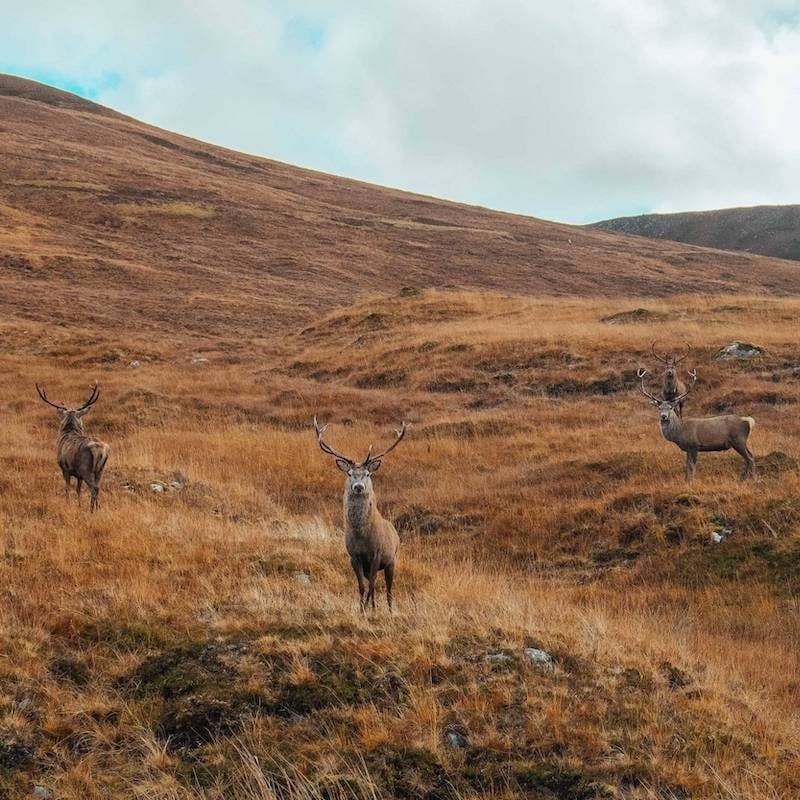
Today, things are beginning to change once again, this time for the better. Baby Scots pine are recolonizing bare landscapes, red squirrels and pine martens are moving back into lost territory, and rare wildflowers and blaeberry are growing strong in patches of relict pinewood. These changes are being brought about by pioneering rewilding projects across Scotland. See Who's rewilding Scotland? to learn more.
Habitat restoration is a huge part of the rewilding Scotland movement, but it's not all. Considerable efforts are being made to conserve existing populations of wildcats, pine martens and other rare species. Through reintroductions, previously absent species, like the sea eagle, are making a comeback.
The idea of returning apex predators, like lynx and wolves, has also entered the rewilding narrative, sparking both excitement and fierce debate. Ecologically speaking, with a full complement of keystone species, like apex predators and ecosystem engineers, we could give nature the tools to thrive once again in a re-wild Scotland.

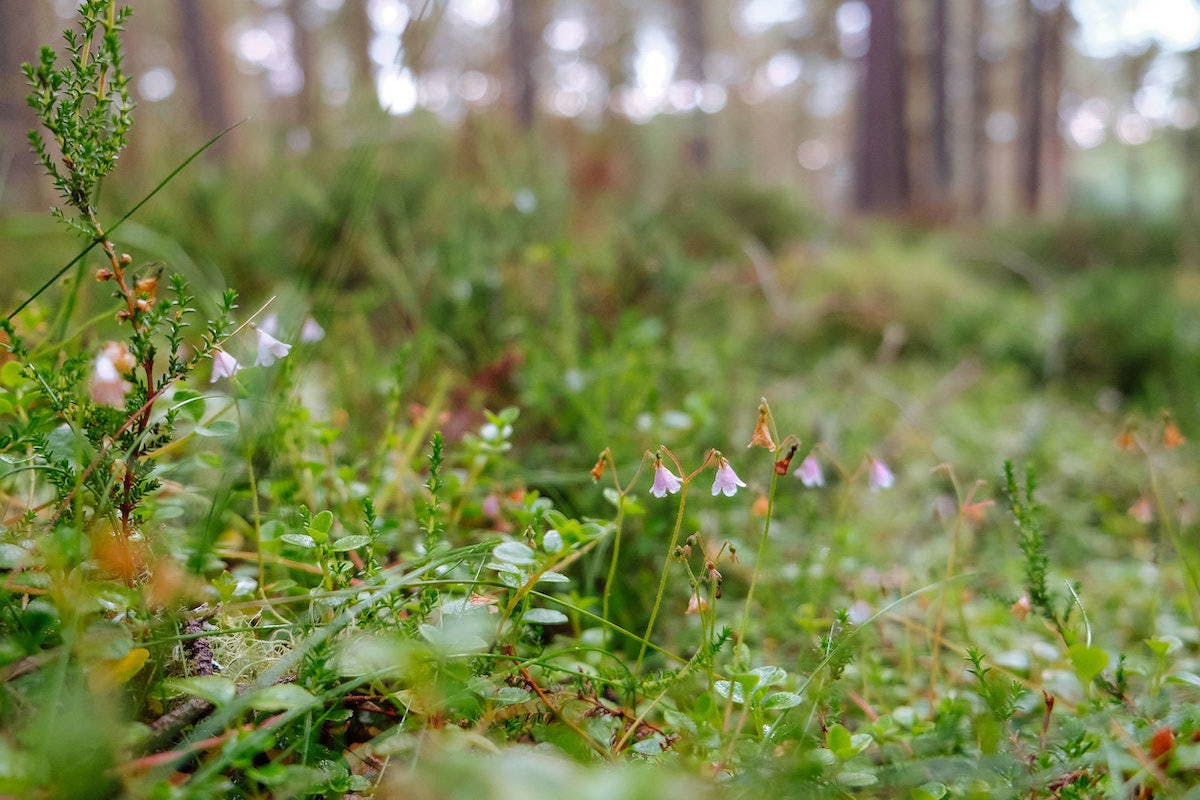
In 2019, the State of Nature report measured the condition of nature in 218 countries and reported that Britain ranks 189th in the world. To the average eye, Scotland offers speculator natural landscapes, although what ecologists are calling ‘ecological blindness’ is masking Scotland’s true impoverished condition to many. Ancient complex woodland ecosystems, large carnivores and many herbivores are missing. Scotland’s natural world doesn’t have the diversity of networks and communities to allow nature to function as a whole.
Rewilding represents an opportunity to remove the pressures that are hampering nature’s recovery and allow key natural processes to play out unimpeded. This could be through restoring and reconnecting fragmented forests; letting rivers flow their natural course; or reintroducing keystone species that engineer the ecosystem and create balance. Rewilding is about stepping back, trusting nature, and letting her resume control.
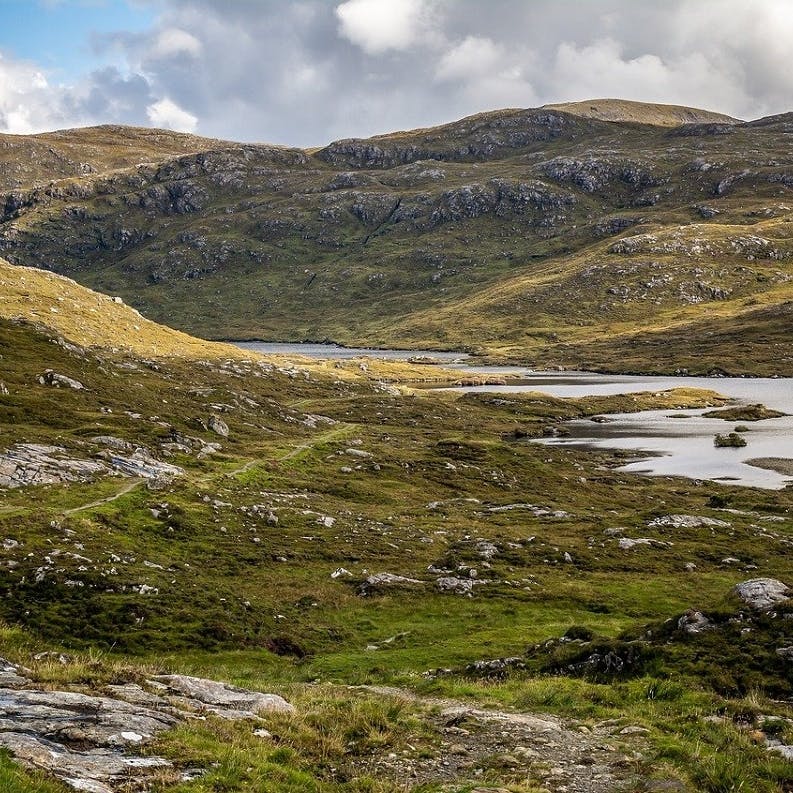
With warming temperatures and extreme weather events more common than ever, Scotland offers an important opportunity to help combat the breakdown of the planet's climate. By planting trees and restoring forests, we can keep carbon stored in trees and out of our atmosphere.
Peatland ecosystems are also a hugely efficient carbon sink. Though many peatlands have been actively dried out for exploitation, for example to plant commercial conifer plantations, re-wetting this important ecosystem will help recapture huge amounts of carbon. Peatlands are another ecosystem degraded by Scotland’s high deer population, with deer browsing and trampling vegetation and exposing the carbon rich peat to the atmosphere.
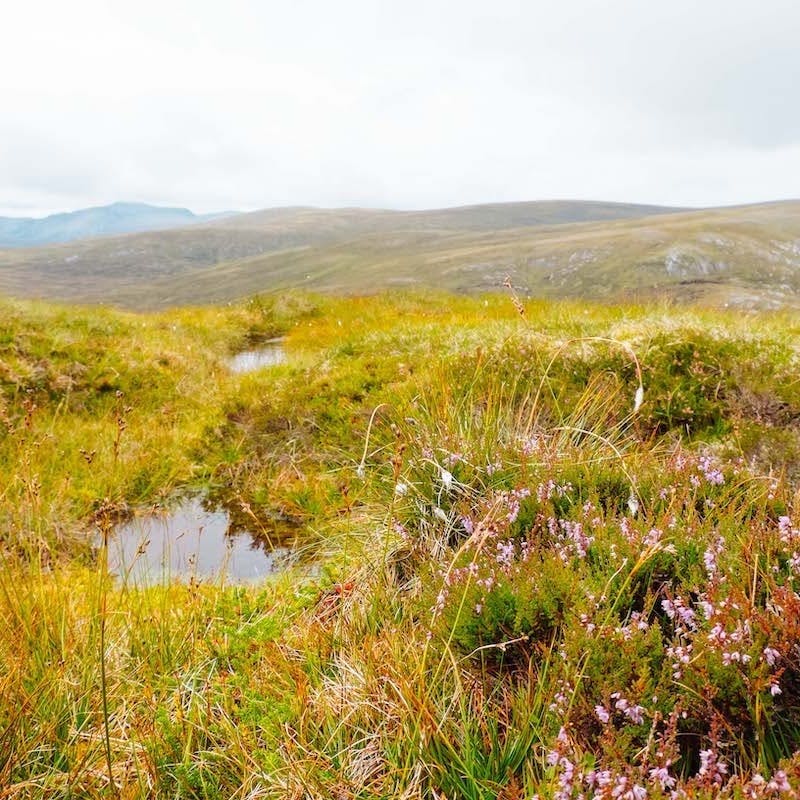
Protecting Scotland's natural world and creating a wilder Scotland doesn't mean removing people from the land. Thanks to the 'right to roam' law, Scotland's landscapes are accessible to everyone and they are enjoyed by an ever-increasing number of people.
By restoring ecosystems to their full potential, we can all enjoy a wilder, richer and more vibrant natural world.
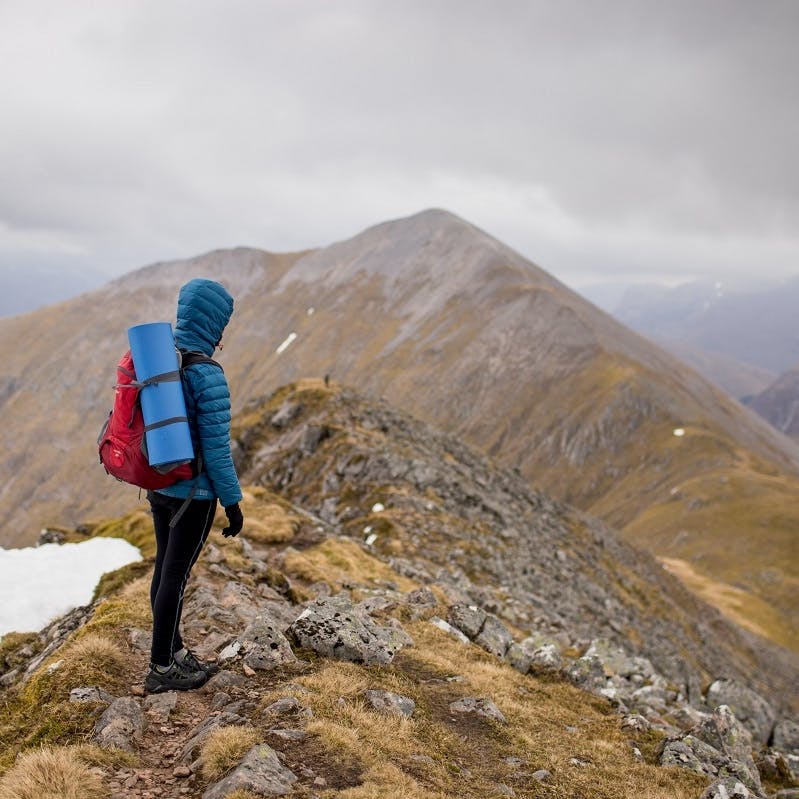

Do you want to have a direct impact on climate change? Sir David Attenborough said the best thing we can do is to rewild the planet. So we run reforestation and rewilding programs across the globe to restore wild ecosystems and capture carbon.
Get involvedScotland is a refuge for species that are absent from England, Wales and Ireland and a stronghold for otherwise rare species. Capercaillie and wildcats have been entirely lost from the rest of the United Kingdom, but can still be found in small populations in Scotland.
Rare species like the pine marten and red squirrel are beginning to recover in the Caledonian pinewoods that carpet Scottish glens. These forests are also home to the Scottish crossbill, the UK's only endemic bird species.
Restoring these vital habitats is crucial to bring these species back from the brink and safeguard the future of the UK's iconic wildlife.
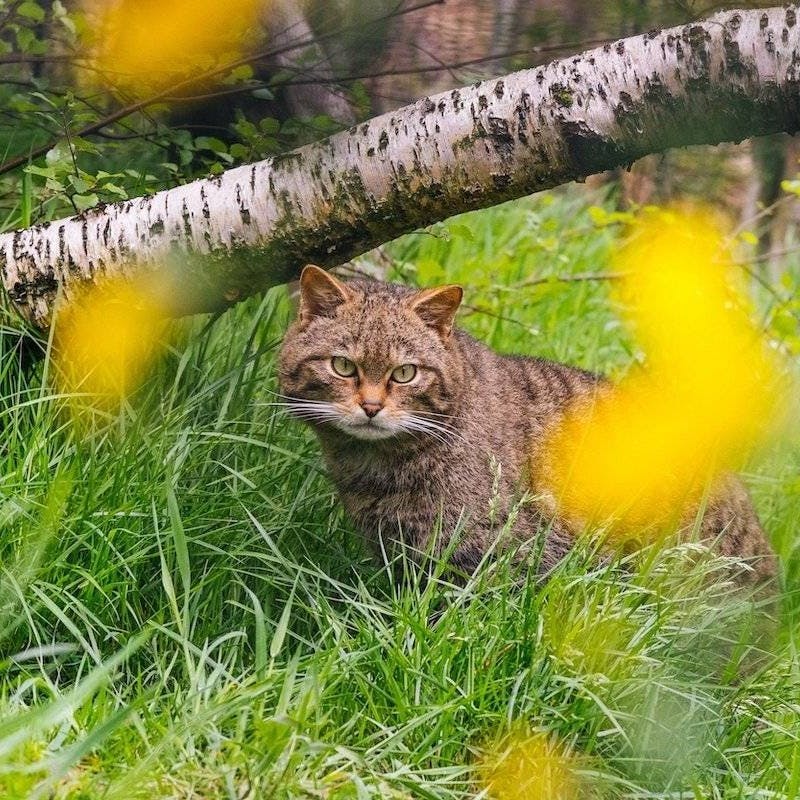
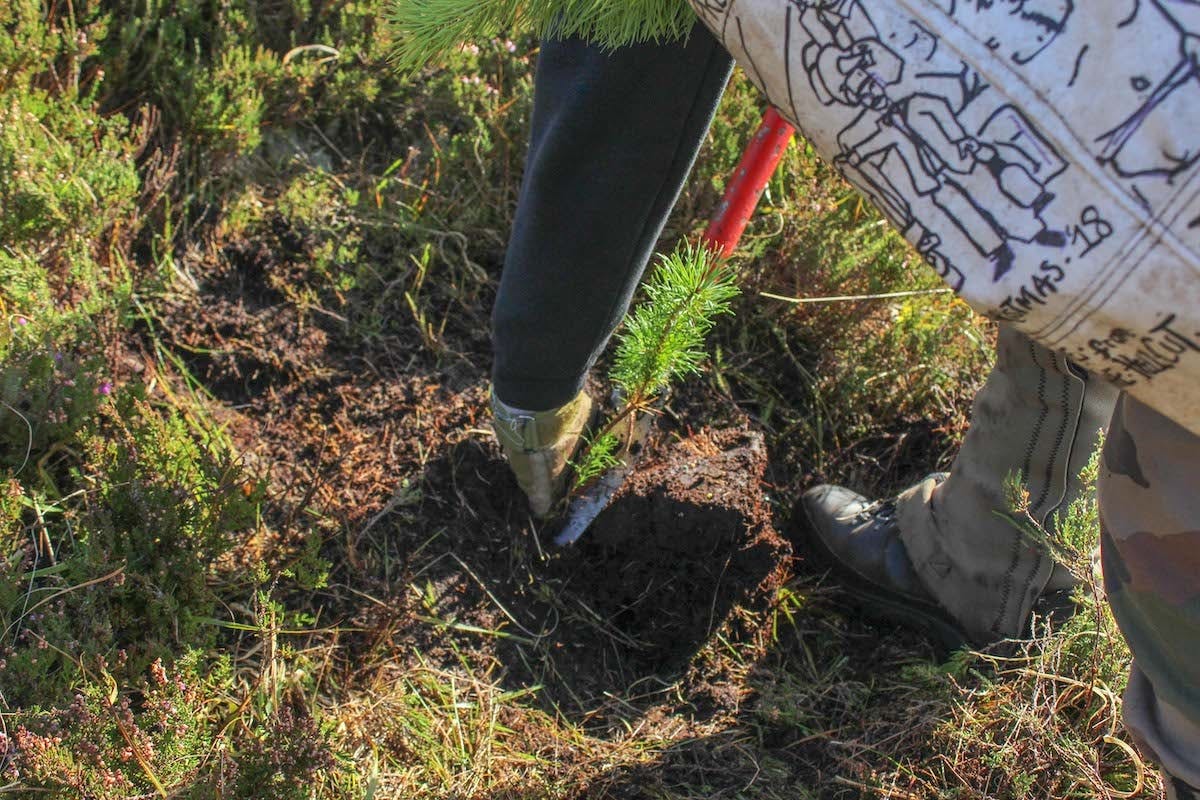
A survey conducted for the Scottish Rewilding Alliance by the independent polling company, Survation, reported that 76% of respondents support rewilding in Scotland and only 7% completely opposed.
In spite of the overwhelming backing, the notion of rewilding in Scotland raises genuine concern amongst some stakeholders, such as farmers and deer stalkers. There is a belief that rewilding is about giving more space to nature at the cost of people’s interests and needs for the following reasons.
Mainstream media has fed into the fear of rewilding to some extent through extensive coverage on the topic of large carnivore reintroductions - the idea of apex predators freely roaming Scotland clearly arouses public interest. From landowners and farmers perspectives’ there is valid concern that animals such as wolves or lynx will pose a serious threat to their livelihoods by preying on livestock.
Advocates for the reintroduction of large carnivores to Scotland argue that they would bring ecological and economical benefits to Scotland and address some of the ecological imbalances affecting the country. In particular, it is argued that carnivores would exert top-down pressures on the overabundant deer population through directly killing and eating deer and create a landscape of fear, thereby helping habitats recover.
In Europe, wolves and other large carnivores have been returning by themselves, and to countries with less available habitat and more people than in the remote areas of Scotland. With protective legislation in place, their numbers have been increasing across the continent. The same is not happening in Britain. Firstly, being an island, they cannot return naturally. Secondly, the current social and political climate means carnivores remain a distant possibility in Scotland.
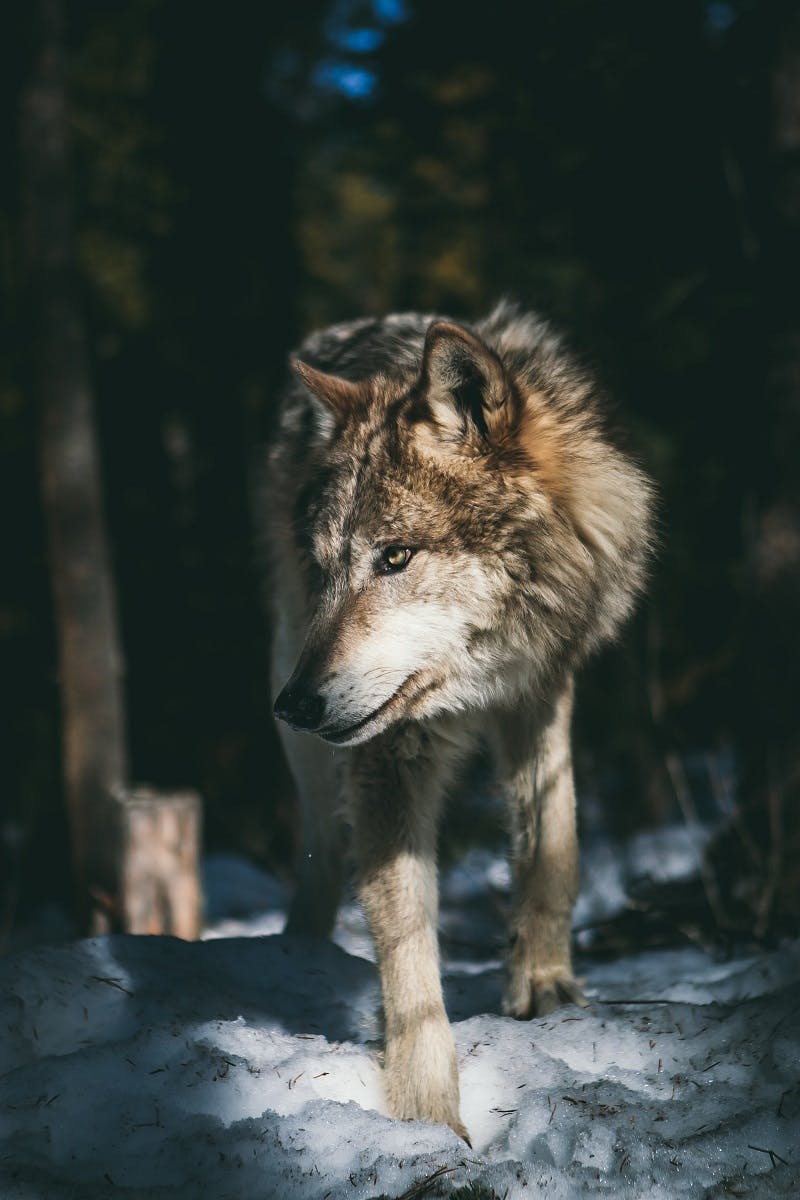
For now, proponents of rewilding have turned their attention to the Eurasian lynx, the most likely candidate for reintroduction.
A consortium of conservationists, led by Scotland: The Big Picture, conducted a social feasibility study for ‘Lynx to Scotland’ in Cairngorms National Park and Argyll. The findings revealed 5 distinct opinions from key stakeholders. Of these 5 opinions, 2 are in favour, 1 against and the other 2 feel it is too soon for lynx although want to evaluate the idea further. In the parks’ current state, the respondents felt there isn’t the habitat for such species, but views are optimistic this will improve within time with more restoration.
A key takeaway from this study is that the subject is not black and white. A variety of opinions and concerns show the nuance involved but also illustrate the desire for stakeholders to engage in the conversation to improve the state of nature in Scotland.
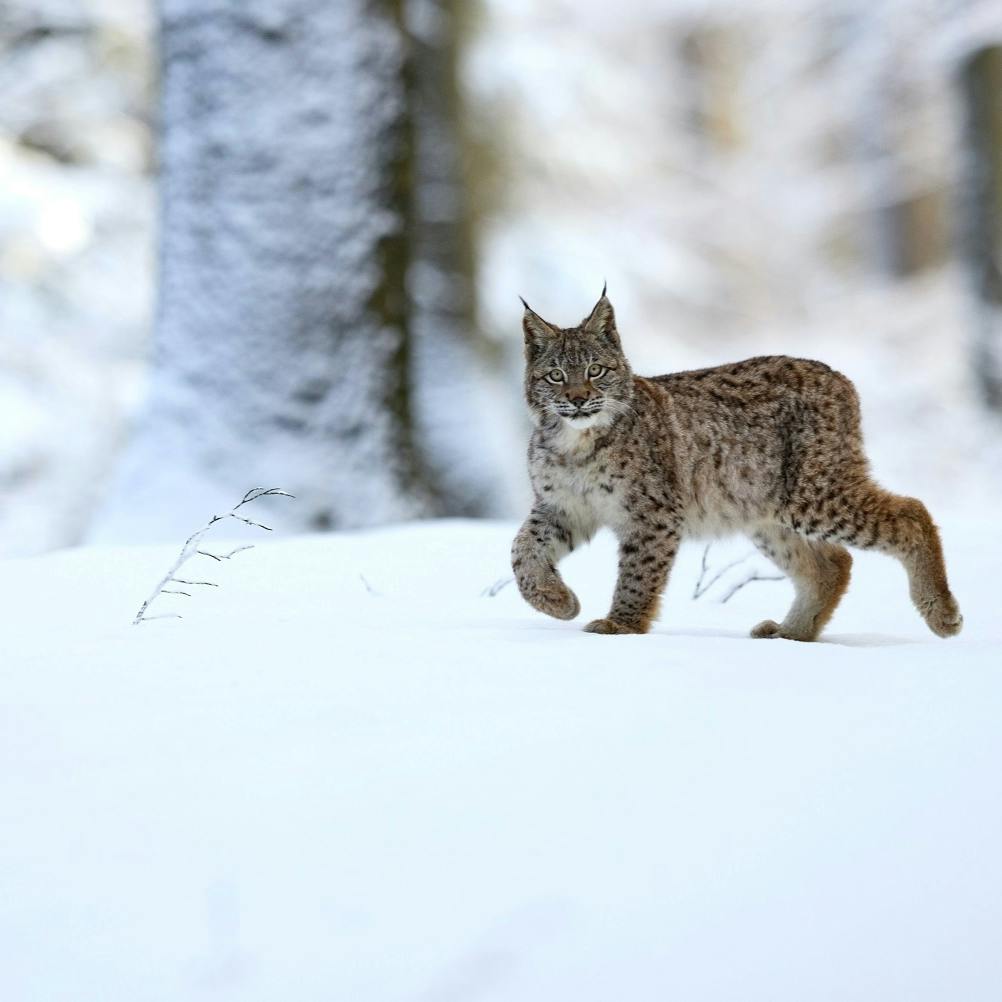
Large carnivore reintroductions aren't the only contentious issue about rewilding in Scotland.
Beavers were the UK’s first authorised mammal reintroductions at Knapdale Forest in Argyll in 2009, and were given protected status in 2019. Since then NatureScot (previously Scottish Natural Heritage) has been granting permission to cull beavers considered to be problematic to landowners and farmers. An estimated one fifth of the population has already been culled for the damage caused through flooding farmland. Rewilding charity Trees for life, successfully won a court case against NatureScot for failing to make the culling of beavers a last resort and are calling for translocation of problem animals to new areas instead.
While beavers can occasionally have negative local impacts on agricultural land and infrastructure, they are widely recognised as important 'ecological engineers'. The dams they build shape the ecosystem by creating new habitats for a myriad of species and help prevent widespread flooding by slowing floodwaters upstream.
The overall positive effect of this keystone species has driven conservationists to call for a better solution. Signs of success are appearing as the translocation of beavers from farms in Tayside has now been approved by the government. This U-turn in policy will allow landowners who wish to benefit from beavers to welcome them and their ecosystem-impacting behaviours.
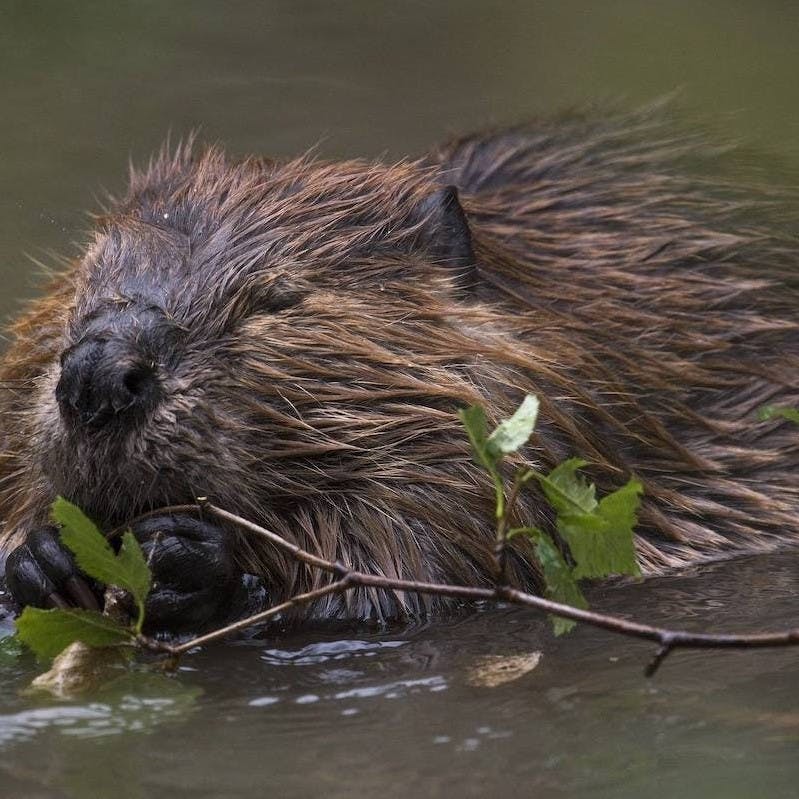
Land ownership has pivotally shaped Scotland’s landscape for centuries. Those who held the control of land, held the power. In the few hands this power has laid, decisions have all too often been made to advance personal interests over the public’s.
Today, a new narrative appears to be emerging with a wave of landowners attempting to revolutionise how land is managed on their estates. These so-called ‘green lairds’ are shifting from traditional land uses to see what a wilder Scotland could look like. Driven by the backdrop of the climate crisis, rewilding is the tool green lairds are using to fix Scotland’s wrecked landscapes. The jury is out, however, as the control of vast amounts of Scottish land is still in the hands of a few, with claims that land is purchased to offset emissions from elsewhere.
To name a few of the estates where multi-millionaire owners are running large-scale restoration projects: Kildrummy estate, owned by American property developers Christopher and Camille Bently, and Scotland’s largest private landowners Anders and Anne Holch Povlsen who own over 80,000 hectares across Sutherland and the Grampian mountains.
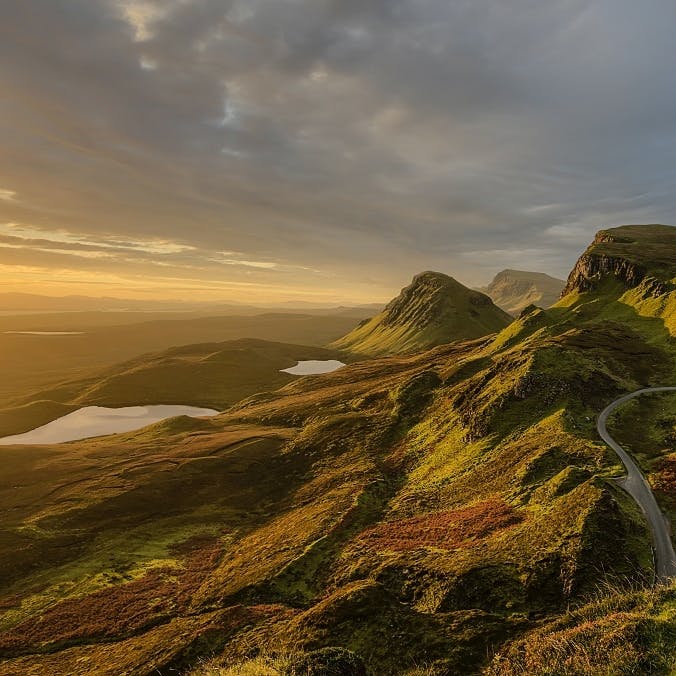
Another criticism of rewilding is around land use and food security. Some farmers have raised concerns about fulfilling their duty to feed a growing population while productive farmland is given over to rewilding.
In the case of rewilding in Scotland, Wouter Helmer, ex-rewilding director at Rewilding Europe, suggests this won’t be an issue as the trend is moving towards more productive farming being done on better soils using less land, with the Scottish Highlands being a less profitable agricultural avenue.
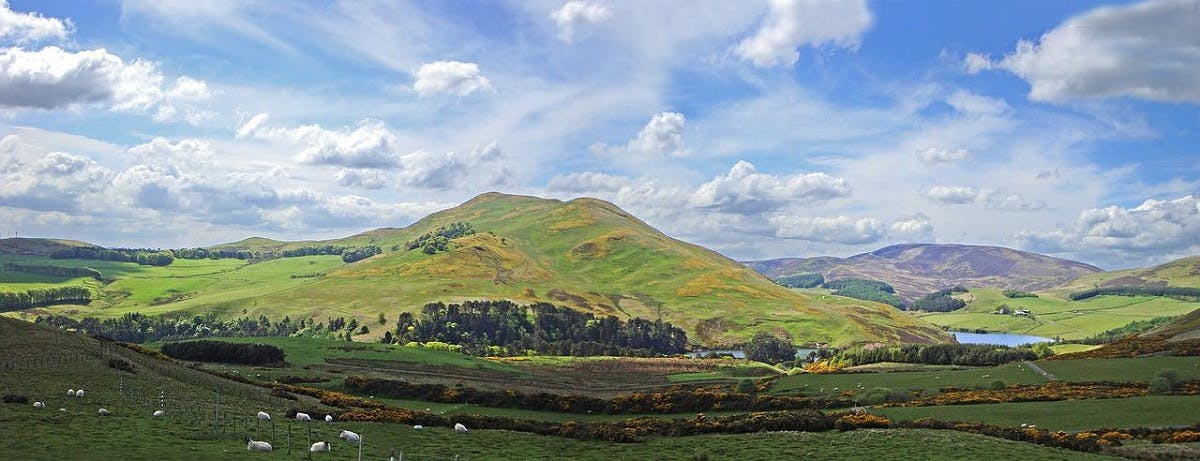
The scale and scope of rewilding projects at the moment shows there are high hopes of improving Scottish wilderness in the future. This drive to rewild Scotland at scale is illustrated by the Scottish Rewilding Alliance's proposal for Scotland to become the world’s first rewilding nation by rewilding 30% of its land and seas over the next 10 years.
Below are some of the most significant rewilding projects in Scotland today.
Restoring habitats, species and ecological processes across 600 sq km (230 sq miles) of land in the Cairngorms National Park makes this project the largest of its kind in the UK. Funded through the Endangered Landscape Programme (ELP), via Arcadia, a charitable fund.
Their 200-year plan sets out to achieve a multitude of enhancements to Scottish nature through interventions such as:
The park already is home to over 5,000 species including wildcats, eagles, hen harriers and red squirrels, of which 20% are rare or scarce.
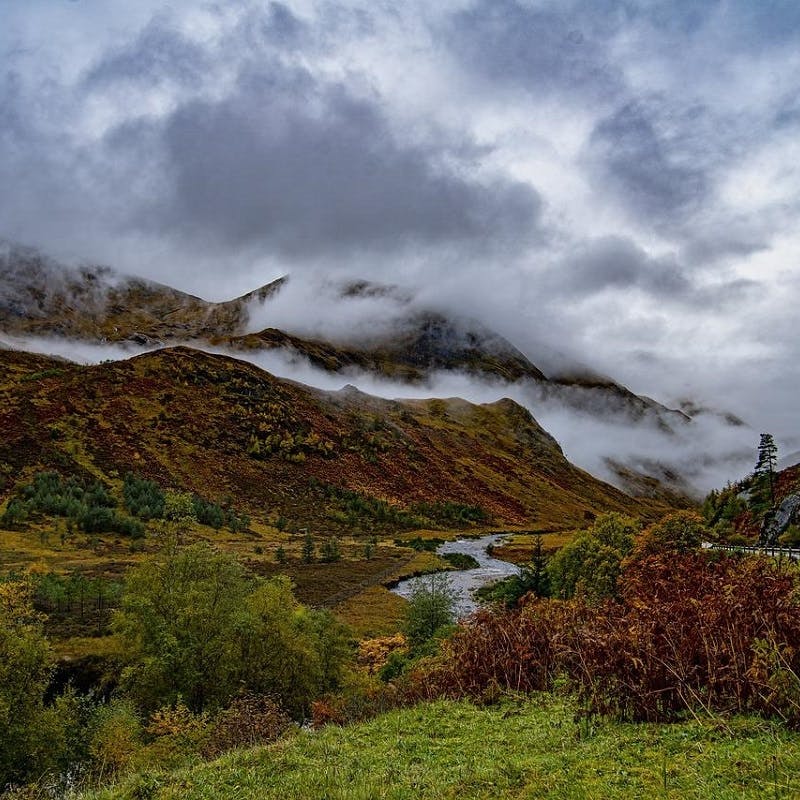
In the heart of the Scottish Highlands is the site of Trees for Life’s flagship rewilding project. Once hunting grounds for royalty, it is now being restored to a wild native forest by tree planting and natural regeneration.
Despite centuries of degradation from overgrazing and browsing by sheep, goats, cattle and deer, the area now contains more than 4,000 species of flora and fauna including numerous protected species.
Dundreggan is embracing people to play a part in nature’s transformation in the area with plans to open a rewilding centre in 2023. The facility will invite the public to explore the ancient pinewood and juniper forest and to witness rewilding in action.
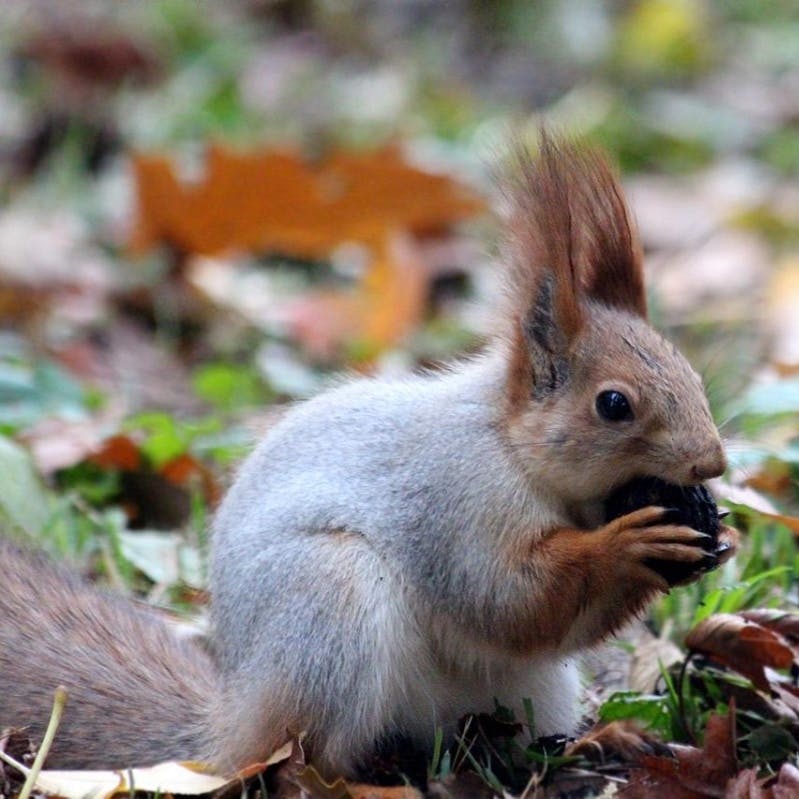
Rewilding Europe, Trees for Life and a host of other local stakeholders have set out on a 30-year journey to rewild vast tracts of the Scottish Highlands. The area of 500,000 acres covers land that joins Loch Ness to the West coast.
Falling to a similar fate to most of Scotland’s forests, this region has also been stripped of new trees by overgrazing. The focus of this exciting rewilding initiative includes the following:
With the involvement of a diverse group of 20 landowners and over 50 other local stakeholders, this project is putting the power in people to revive nature and local economies simultaneously. In its inspiring vision, the project aims to foster nature-based tourism, wild food, regenerative grazing and agroforestry, field sports and developing a circular economy.
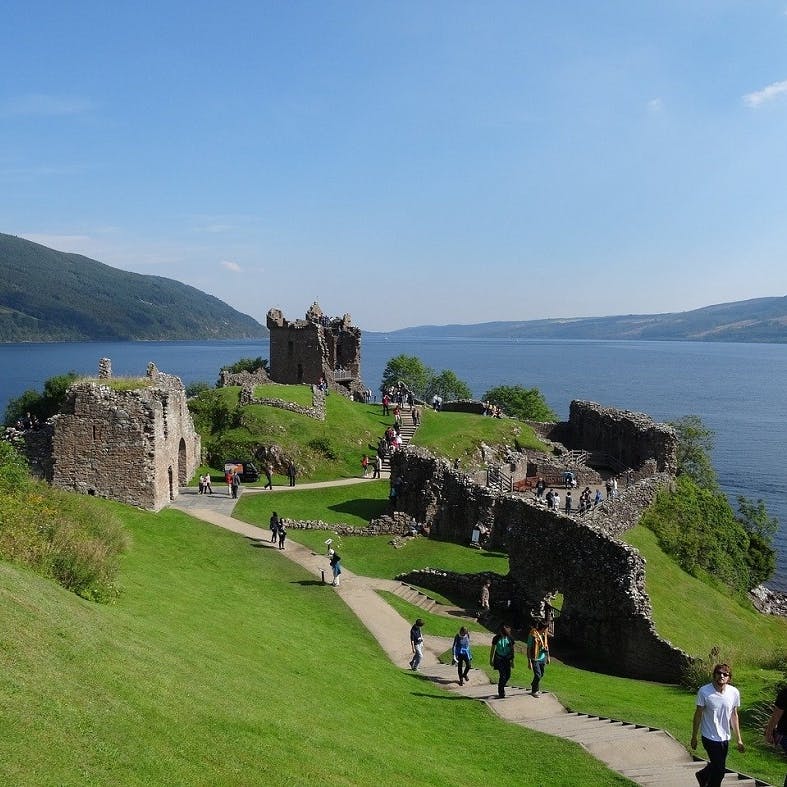
Private estates like Alladale Wilderness Reserve and Glenfeshie have also made great strides in transforming barren lands to wilder, healthier states. They are rejecting the traditional deer stalking culture, where management is aimed at maximising deer numbers for sport hunting, choosing to dramatically reduce deer numbers in the name of habitat restoration. Active planting, particularly of rare broadleaf species, is also underway to help tree seedlings carpet these glens once more.
Here at Mossy Earth, we are proud to be providing extra help in restoring Alladale Wilderness Reserve. Our partnership with Alladale aims to accelerate the return of abundance to its wild ecosystems, boost its biodiversity and support existing wildlife.
To achieve this we’ve set up a series of projects that focus on reconnecting broken links in the web of life and reestablishing key natural processes.
If you’re interested in contributing to our rewilding efforts in Scotland, then consider becoming a Mossy Earth member. You’ll regularly support impactful rewilding and reforestation projects, not only in Scotland but across the globe.
Join a growing community and be engaged in an exciting range of projects from kelp forest restoration to protecting vultures and restoring wetlands.
This community-led marine rewilding project focuses on restoring marine habitats that have been disappearing from Scottish coastlines. Based in Loch Craignish in Argyll, it is the UK's first of its kind with a focus on restoring oyster and seagrass meadows to improve biodiversity, capture carbon and generate green jobs.
Involving the local community of volunteers this inspiring organisation is working to repopulate Loch Craignish with native oysters and restore seagrass meadows that filter the water, sequester carbon, and create reefs where fish spawn.
Their objective is to grow 1 million juvenile oysters and plant up to 80 hectares of seagrass capable of supporting a multitude of marine life.
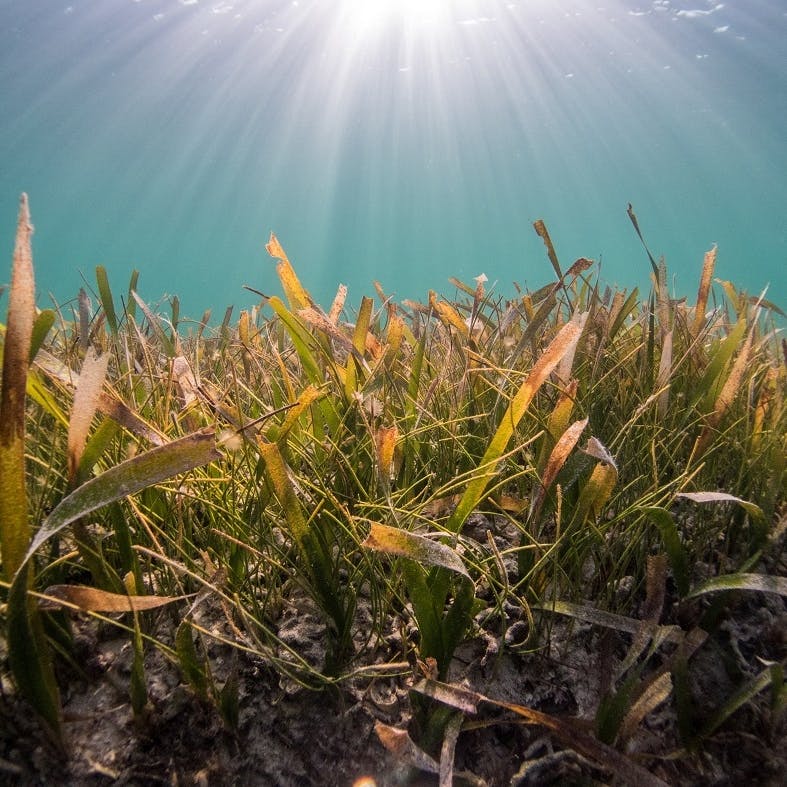
Today, Scotland's land and ocean habitats are already a little bit wilder and that's worth celebrating. But, we must do more.
If you’d like to see an abundance of Atlantic salmon back in Scotland’s rivers, wildcats denning in pine forests and ospreys patrolling the skies, you’re in good company. A wilder future for Scotland is entirely possible.
How to get involved:
With such wonderful changes already happening, there really is no better time to join the rewilding Scotland movement.
